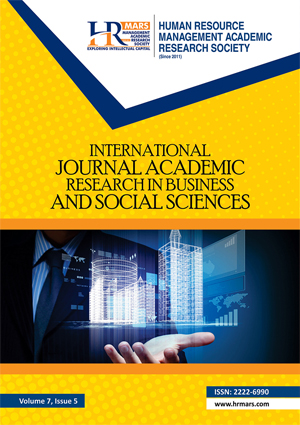This study examines the impact of National Fadama Development Project II on the provision of advisory
services to the farmers (beneficiaries). It assesses the extent to which participation in the program has
enhanced the level of adoption and demand for advisory services. The study relied on primary data
collected using structured questionnaire and personal interviews. The study uses Propensity score
matching (PSM) and double difference (DD) estimator to really net out the impact on the beneficiaries.
Statistical test for difference (t-Test) was used to compare the outcomes of the beneficiaries and non
beneficiaries. Fadama II has increased demand for postharvest handling, agricultural marketing,
livestock management practices, crop management practices, and financial management advisory
services and have made significantly greater impact compared with nonbeneficiaries at 5% level of
significance but did not have a significant impact on the demand for improved crop varieties and soil
fertility management technologies, perhaps because of its emphasis on providing postproduction
advisory services. The Fadama II project has had limited impact on provision of production advisory
services probably because the public extension service provider (the ADP) has focused on providing
production advisory services using mainly a supply-driven approach The project needs to consider
supporting soil fertility management to enhance the effectiveness of productive assets and other
interventions and to address the potential land degradation that could result from higher agricultural
productivity. It is also important for Fadama II to invest in providing advisory services on production
technologies, because the ADP has limited funding to effectively provide such services. As it strives to
reform its extension systems toward more pluralistic systems, the government needs to harmonize
existing approaches and seek to use those that are complementary rather than conflicting.
Alston J.M, & Parde, P.G.( 2001). Attribution and other problems in assessing returns to agricultural
R&D. Agricultural Economics, 25, 141-152.
IDA. (2009). International Development Association at work: Nigeria: Strengthening communities and
reducing poverty. Available at; http://go.worldbank.org/8254R18HC0.
IFPRI. (2007). Sustainable solution for ending hunger and poverty: International Food Policy Research
Institute. Fadama II Abuja, Nigeria.
National Fadama Development Office (NFDO) ( 2005). Poverty reduction through increased productivity
and empowerment. Abuja, Nigeria: NFDO, Project Coordination Unit.
Nigerian National Planning Commission (NNPC). (2004). National Economic Empowerment and
Development (NEEDS) Abuja, Nigeria.
Nwaerondu, N. & Thompson, G. (1987). The use of educational radio in developing Countries. Lesson
from the past. Journal of Distance Education. Available at htt://cade.athabascau.ca.vol12.2/7
Nwaerondu and Thompson. Html.
Oladele, O., Koyoma, O. & Sakagama, J.(2004). Africa in search of extension system:Experience from
Nigeria. Food, Agriculture and Environment, 2(1), 276–280
Ozor, N., Agwu, A., Chukwuone, N., Madukwe, M. & Garforth, C. (2007). Cost-sharing of agricultural
technology transfer in Nigeria: Perceptions of farmers and extension professionals. Journal of
Agricultural Education and Extension, 13(1), 23–37.
Qamar, K. (2005). Modernizing national agricultural extension systems: A practical guide For policy
makers of developing countries. Rome: United Nations Food and Agricultural Organization.
Smith, J. & Todd, P. (2001). Does matching overcome LaLonde's critique of nonexperimental
estimators?. Journal of Econometrics 125(1–2): 305–353.
Copyright: © 2012 The Author(s)
Published by HRMARS (www.hrmars.com)
This article is published under the Creative Commons Attribution (CC BY 4.0) license. Anyone may reproduce, distribute, translate and create derivative works of this article (for both commercial and non-commercial purposes), subject to full attribution to the original publication and authors. The full terms of this license may be seen at: http://creativecommons.org/licences/by/4.0/legalcode
